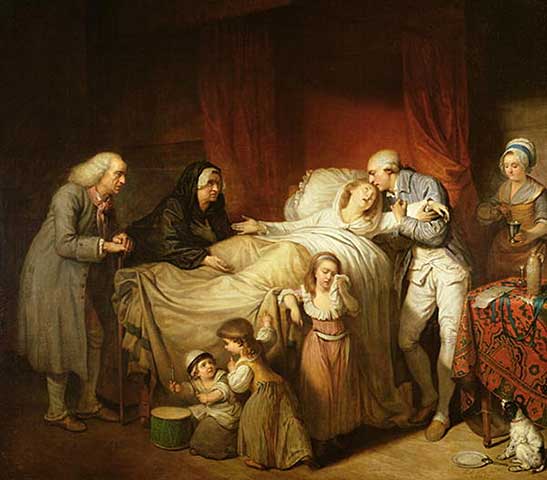Pierre-Alexandre Wille on:
[Wikipedia]
[Google]
[Amazon]

 Pierre-Alexandre Wille (19 July 1748, in
Pierre-Alexandre Wille (19 July 1748, in
@ the
"Pierre-Alexandre Wille and the French Revolution"
by K. E. Maison, in: ''Master Drawings'', Vol. 10, No. 1 (Spring, 1972)
Pierre-Alexandre Wille
@ the Base Joconde
Notes
@ Russian Wikisource, from the ''

 Pierre-Alexandre Wille (19 July 1748, in
Pierre-Alexandre Wille (19 July 1748, in Paris
Paris () is the capital and most populous city of France, with an estimated population of 2,165,423 residents in 2019 in an area of more than 105 km² (41 sq mi), making it the 30th most densely populated city in the world in 2020. S ...
- 1837, in Paris)Biographical notes@ the
British Museum
The British Museum is a public museum dedicated to human history, art and culture located in the Bloomsbury area of London. Its permanent collection of eight million works is among the largest and most comprehensive in existence. It docum ...
was a French genre
Genre () is any form or type of communication in any mode (written, spoken, digital, artistic, etc.) with socially-agreed-upon conventions developed over time. In popular usage, it normally describes a category of literature, music, or other for ...
painter.
Life and work
Son of the engraver,Johann Georg Wille
Johann Georg Wille, or Jean Georges Wille (5 November 1715, near Biebertal - 5 April 1808, Paris) was a German-born copper engraver, who spent most of his life in France. He also worked as an art dealer.
Life and work
He was the eldest of seven ...
, he received his first lessons in art at his father's studio. From 1761 to 1763, he studied with Jean-Baptiste Greuze, then with Joseph-Marie Vien. Relying on his father's influence to promote his career, he became a member of the Académie Royale de Peinture et de Sculpture
The Académie Royale de Peinture et de Sculpture (; en, "Royal Academy of Painting and Sculpture") was founded in 1648 in Paris, France. It was the premier art institution of France during the latter part of the Ancien Régime until it was abol ...
in 1774, but never became an Academician. The following year, he married Claude-Paule Abau. He exhibited at most of the Salons from 1775 to 1787. For a time, he served as a court painter to King Louis XVI
Louis XVI (''Louis-Auguste''; ; 23 August 175421 January 1793) was the last King of France before the fall of the monarchy during the French Revolution. He was referred to as ''Citizen Louis Capet'' during the four months just before he was ...
. Some of his paintings were engraved by his father.
During the French Revolution
The French Revolution ( ) was a period of radical political and societal change in France that began with the Estates General of 1789 and ended with the formation of the French Consulate in November 1799. Many of its ideas are considere ...
, he served with the Garde Nationale, but was ruined financially. He continued to paint, although his work had become hopelessly out of fashion. He held his last exhibit (a few watercolors) at the Salon in 1819.
In 1821, after recurring bouts of illness over twelve years, Claude-Paule went mad and was committed to the asylum at Charenton. In order to pay the cost of her stay there, he had to appeal for charity from Duchess Marie Thérèse. Nothing more was heard from him, and it was long assumed that he died shortly after; possibly also in a hospital. More recently, the British writer, Colin Clark, son of the art historian, Kenneth Clark, was able to establish that he had died in poverty in 1837, at the age of eighty-eight.
References
External links
"Pierre-Alexandre Wille and the French Revolution"
by K. E. Maison, in: ''Master Drawings'', Vol. 10, No. 1 (Spring, 1972)
Pierre-Alexandre Wille
@ the Base Joconde
Notes
@ Russian Wikisource, from the ''
Brockhaus and Efron Encyclopedic Dictionary
The ''Brockhaus and Efron Encyclopaedic Dictionary'' (Russian: Энциклопедический словарь Брокгауза и Ефрона, abbr. ЭСБЕ, tr. ; 35 volumes, small; 86 volumes, large) is a comprehensive multi-volume ...
''
{{DEFAULTSORT:Wille, Pierre-Alexandre
1748 births
1837 deaths
18th-century French painters
French genre painters
Académie royale de peinture et de sculpture
Painters from Paris
19th-century French painters